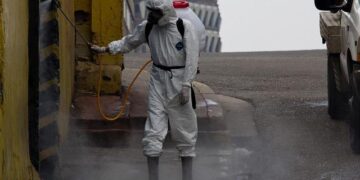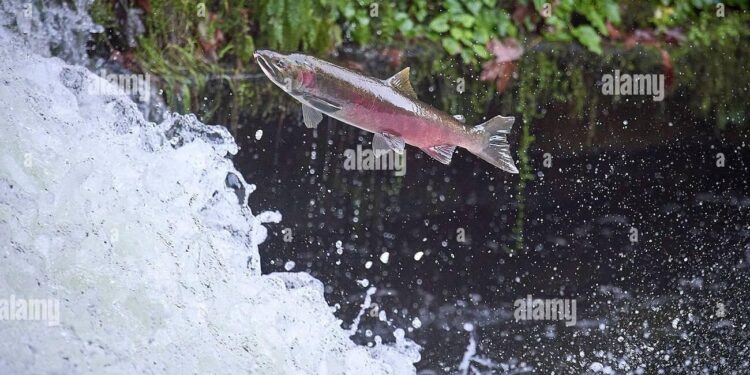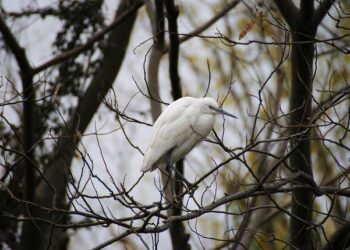PETERSBURG – A group of local students recently ventured into the heart of Coho Creek to engage in a hands-on science education experience. Organized by community educators and environmental experts, the expedition aimed to provide Petersburg youth with practical knowledge about the region’s unique aquatic ecosystems and the importance of salmon habitat conservation. This initiative not only enhanced classroom learning but also fostered a deeper connection between young participants and their natural surroundings.
Petersburg Youth Engage in Hands-On Science at Coho Creek
Local students gathered at Coho Creek last week for an immersive outdoor learning experience, diving deep into the ecology of their own backyard. Armed with field notebooks and magnifying glasses, the youth engaged directly with the natural environment, studying everything from water quality to salmon habitats. The hands-on activities were designed to deepen their understanding of the complex ecosystem and the crucial role each species plays in maintaining balance.
The program emphasized key scientific skills and concepts including:
- Water Sampling Techniques: Testing for pH levels, turbidity, and temperature to assess creek health
- Species Identification: Recognizing local plants, insects, and aquatic life
- Data Recording and Analysis: Collecting accurate observations and interpreting findings
- Environmental Stewardship: Understanding human impacts and conservation efforts
| Activity | Purpose | Skills Developed |
|---|---|---|
| Stream Macroinvertebrate Sampling | Evaluate water quality | Observation, Identification |
| Salmon Spawning Habitat Survey | Assess fish population health | Data Collection, Analysis |
| Plant Species Mapping | Understand plant diversity | Research, Reporting |
Inspiring Environmental Stewardship Through Local Ecosystem Exploration
Local students ventured into the heart of Coho Creek last week, immersing themselves in hands-on scientific study that fosters deeper appreciation and understanding of their environmental surroundings. Equipped with notebooks and sampling kits, these young explorers gathered data on water quality, native species, and habitat conditions, gaining firsthand experience that complements their classroom learnings. Their dedicated observations contributed valuable insights into the creek’s health, shedding light on the intricate balance sustaining this vital ecosystem.
Through guided fieldwork led by educators and environmental experts, the youth engaged in activities designed to highlight the importance of conservation and community responsibility. Highlights of the exploration included:
- Macroinvertebrate identification to assess stream biodiversity
- Water pH and turbidity testing to monitor pollution levels
- Mapping native plant species crucial for bank stability
| Activity | Purpose | Outcome |
|---|---|---|
| Water Sampling | Detect contaminants | Confirmed clean, oxygen-rich water |
| Species Inventory | Track biodiversity | Identified 12 native species |
| Shoreline Observation | Assess erosion impact | Recommended planting native shrubs |
Recommendations for Enhancing Outdoor Education Programs in Community Schools
Integrating hands-on, place-based experiences like the recent Coho Creek exploration can significantly enhance community youths’ engagement with environmental science. To deepen the impact, schools should collaborate with local environmental organizations and indigenous knowledge holders, providing students with diverse perspectives. Implementing outdoor curricula that align with state standards while including seasonal projects encourages ongoing learning beyond the classroom walls. Additionally, equipping educators with targeted professional development in outdoor pedagogy ensures they are comfortable and skilled in facilitating these immersive experiences.
Resource allocation plays a critical role in the success of these programs. Schools might consider investing in portable scientific equipment, waterproof field journals, and reliable transportation to remote sites. Creating flexible scheduling that allows multiple outdoor excursions per term will help maintain student enthusiasm and reinforce concepts. The following table outlines key program elements and their recommended practices for community schools:
| Program Element | Recommended Practice | Expected Outcome |
|---|---|---|
| Community Partnerships | Engage local experts and tribal leaders | Enhanced cultural relevance and authenticity |
| Curriculum Design | Integrate standards with field activities | Stronger knowledge retention and application |
| Teacher Training | Professional workshops in outdoor methods | Increased teacher confidence and creativity |
| Materials & Equipment | Provide portable, durable field tools | Improved hands-on learning opportunities |
| Scheduling | Regularly planned excursions per term | Sustained student interest and engagement |
To Conclude
As Petersburg’s youth continue to engage with Coho Creek through hands-on science education, the community gains not only a deeper understanding of its natural environment but also nurtures the next generation of environmental stewards. Initiatives like this highlight the importance of experiential learning in fostering curiosity, stewardship, and a lasting connection to local ecosystems. With ongoing support, these young explorers are poised to make meaningful contributions to both scientific knowledge and the preservation of Petersburg’s unique natural heritage.






























